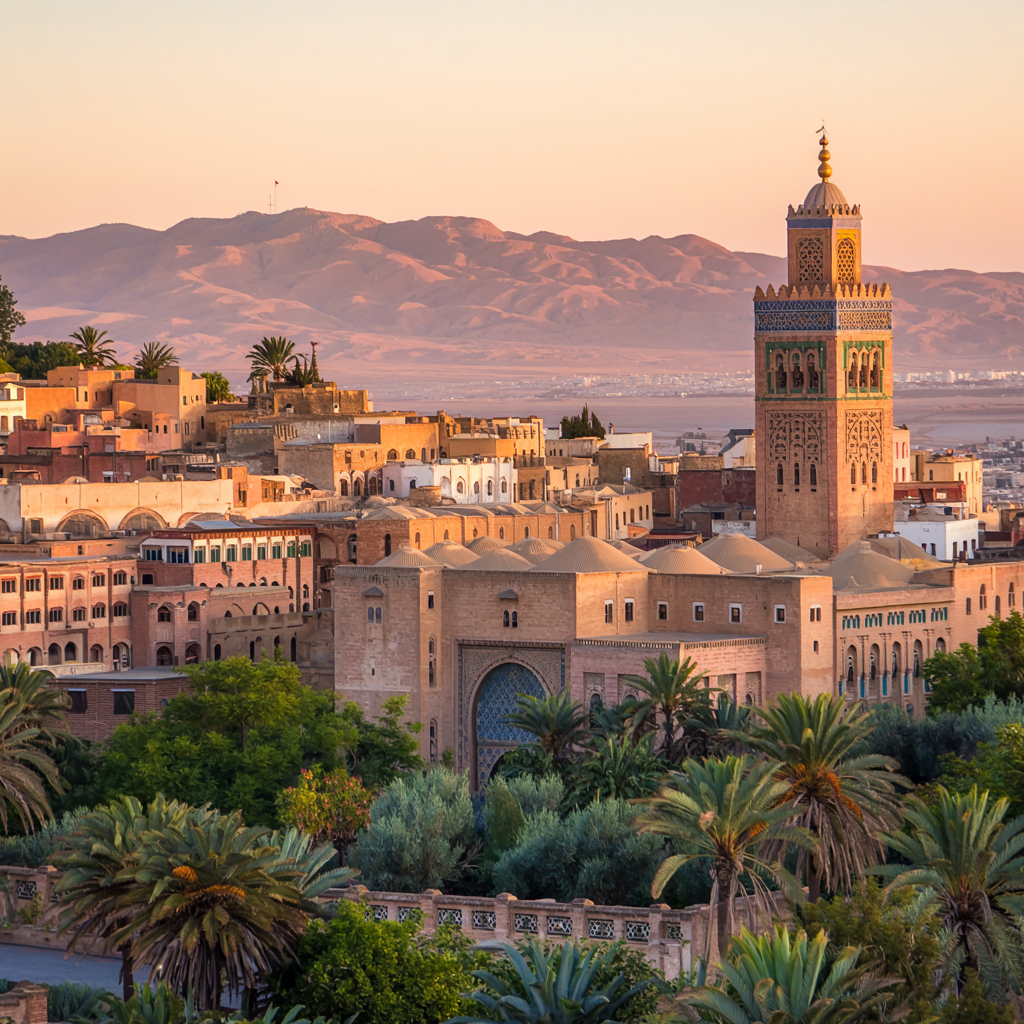Morocco Tours
Morocco: A Land of Endless Wonder
Have you ever dreamed of wandering through bustling medinas, riding camels across golden sand dunes, or sipping mint tea in a vibrant coastal town? Morocco offers all this and more, but when is the best time to experience its magic? Whether you’re seeking cultural immersion, outdoor adventures, or budget-friendly travel, timing is everything in this North African gem.
From the snow-capped Atlas Mountains to the sun-drenched beaches of Essaouira, Morocco’s diverse landscapes beckon travelers year-round. But with temperatures soaring over 100°F in summer and some regions experiencing chilly winters, choosing the right season can make or break your Moroccan adventure. In this guide, we’ll unveil the secrets to perfect timing, helping you navigate Morocco’s weather patterns, cultural festivals, and regional highlights. Get ready to discover the ideal moments for trekking, desert exploration, and immersing yourself in the rich tapestry of Moroccan life – all while keeping your budget intact.
Optimal Seasons for Visiting Morocco
Mid-April to May: Mild temperatures and cultural festivals
Spring in Morocco offers an ideal blend of comfortable weather and vibrant cultural experiences. From mid-April to May, travelers can enjoy:
- Mild temperatures perfect for outdoor activities
- Lush landscapes with blooming wildflowers
- Fewer crowds compared to peak summer months
- Excellent conditions for hiking in the Atlas Mountains
This period is particularly suitable for exploring cities like Marrakech and Fez, where the weather is pleasant for sightseeing. The Fez Festival of World Sacred Music, typically held in May, adds a rich cultural dimension to your visit.
Activity | Recommendation |
Hiking | Atlas Mountains |
City Tours | |
Cultural Events | Fez Festival of World Sacred Music |
Desert Excursions | Moderate temperatures in the Sahara |
September to October: Ideal weather and affordable rates
The autumn months present another prime opportunity for Morocco tours:
- Comfortable temperatures across the country
- Reduced crowds following the summer peak
- Excellent conditions for beach visits and desert exploration
- Affordable rates as the high season winds down
- September is particularly favorable for coastal cities like Essaouira, Rabat, and Casablanca. October offers some of the best weather for sightseeing and hiking, with comfortable temperatures and clear skies.
November to December: Budget-friendly option with mild climate
For travelers seeking a more economical trip without compromising on experience:
- Mild climate in most regions
- Lower tourist numbers, allowing for a more authentic experience
- Opportunity to observe local life more closely
- Suitable for exploring imperial cities like Marrakech and Fez
- While temperatures cool down, especially at night, this period offers unique advantages:
- Best surfing conditions, with largest waves from December
- Chance to experience cultural events like the Marrakech International Film Festival
- Possibility of skiing in the High Atlas mountains (December)
Month | Highlights |
November | Cooler temperatures, fewer tourists |
December | Surfing season begins, winter festivals |
With these optimal seasons in mind, it’s important to consider how weather patterns vary across different regions of Morocco. Next, we’ll explore the “Weather Considerations Across Seasons” to help you plan your trip with even greater precision.

Weather Considerations Across Seasons
Now that we’ve explored the optimal seasons for visiting Morocco, let’s delve into the weather considerations across different seasons to help you plan your Morocco tour effectively.
Winter (January-February): Cool temperatures perfect for desert exploration
Winter in Morocco offers a unique opportunity for desert exploration. With average temperatures ranging from 8°C to 18.5°C (46°F to 66°F), it’s an ideal time to visit the Sahara without the scorching heat.
However, be prepared for:
- Cold nights in the desert
- Frequent rains in coastal and mountainous areas
- Lack of heating in many accommodations
City | Average Temperature | Precipitation |
Tangier | 46°F (8°C) | Part of 28.04 inches annually |
Marrakesh | 43°F (6°C) | Part of 11.03 inches annually |
Ifrane | 30°F (-1°C) | Part of 37.83 inches annually |
Spring (March-April): Blooming landscapes and trekking opportunities
Spring brings mild temperatures and vibrant landscapes, making it perfect for outdoor activities:
- Average temperatures: 10°C to 23.5°C (49°F to 74°F)
- Blooming orange trees in May
- Ideal for sightseeing and cultural experiences
Summer (June-August): Hot cities, cooler Atlas Mountains, and music festivals
Summer in Morocco can be intense, especially inland:
- Coastal temperatures: Around 28.5°C (83°F)
- Inland temperatures (e.g., Marrakesh): Up to 99°F (37°C)
- Atlas Mountains: Cooler refuge
- Popular for beach vacations, despite cool Atlantic waters
Autumn (September-October): Mild weather for diverse activities
Autumn offers comfortable conditions for exploring Morocco:
- Average temperatures: 21°C to 27°C (71°F to 81°F)
- Water temperatures: Around 22°C (72°F)
- Ideal for cultural exploration and outdoor activities
- Cooling trend begins in October
With this understanding of Morocco’s weather patterns, you’re better equipped to plan your visit. Next, we’ll explore the cultural experiences and festivals that add vibrancy to your Morocco tour throughout the year.


